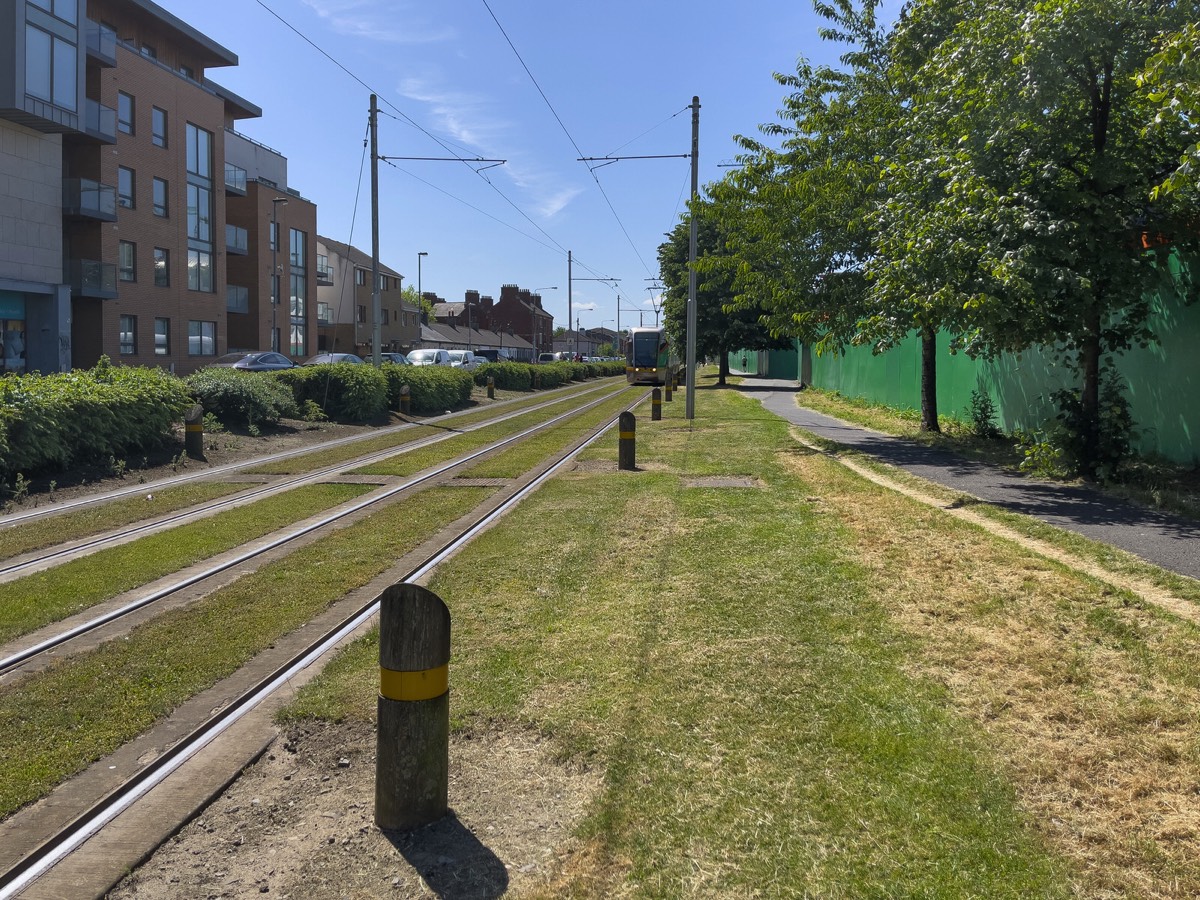This tram stop is located at James's Walk and it is an area that I visit infrequently.
Fatima is a stop on the Luas light-rail tram system in Dublin, Ireland. It opened in 2004 as a stop on the Red Line. The stop is at the southern side of St. James's Hospital, adjacent to James's Walk. Fatima is named for its proximity to Fatima Mansions, a public housing complex. It provides access to the suburbs of Dolphin's Barn, The Coombe, and The Liberties. The stop has two edge platforms, and is of the same design as many Luas stops. After departing the stop, northbound trams turn left and traverse the grounds of the hospital on their way to Connolly or The Point. Southbound trams continue along an abandoned canal alignment, travelling towards Tallaght or Saggart.
In 2007, a proposal was announced for a Luas line from the city centre to Lucan. As of 2022, the project has not been officially approved, but under the proposal, the new line would share track with the Red Line between Fatima and Blackhorse. Fatima would therefore become a junction stop, with trams en route from Lucan to the city centre travelling due east along James's Walk
The stop is also served by Dublin Bus routes 122, 17, 68, and 68A.
Fatima Mansions is an extensive public housing complex located in Rialto, Dublin. In the early 21st century, it underwent a substantial urban renewal programme with the assistance of public and private funding. All existing apartment blocks were demolished to make way for 600 accommodation units, consisting of social, affordable and private housing along with community, business and leisure facilities at a cost of €200 million. The blocks have since been renamed Herberton Apartments, but the area is still referred to locally as Fatima, which is the name of the adjacent Luas Red Line tram stop.
Work on the original complex started before World War II under the direction of Dublin Corporation (now Dublin City Council) but construction was held up due to material shortages. The first phase of construction was finally completed after the war and the first tenants began to move in during 1947: the development consisted of fifteen blocks, each of four floors in height. They replaced tenement housing for the area's working-class residents, and provided a great improvement in living conditions. In the mid 1980s the area became notorious for its high levels of heroin use and drug dealing, which eventually led to the original complex's demolition due to the drug problem's severity.


